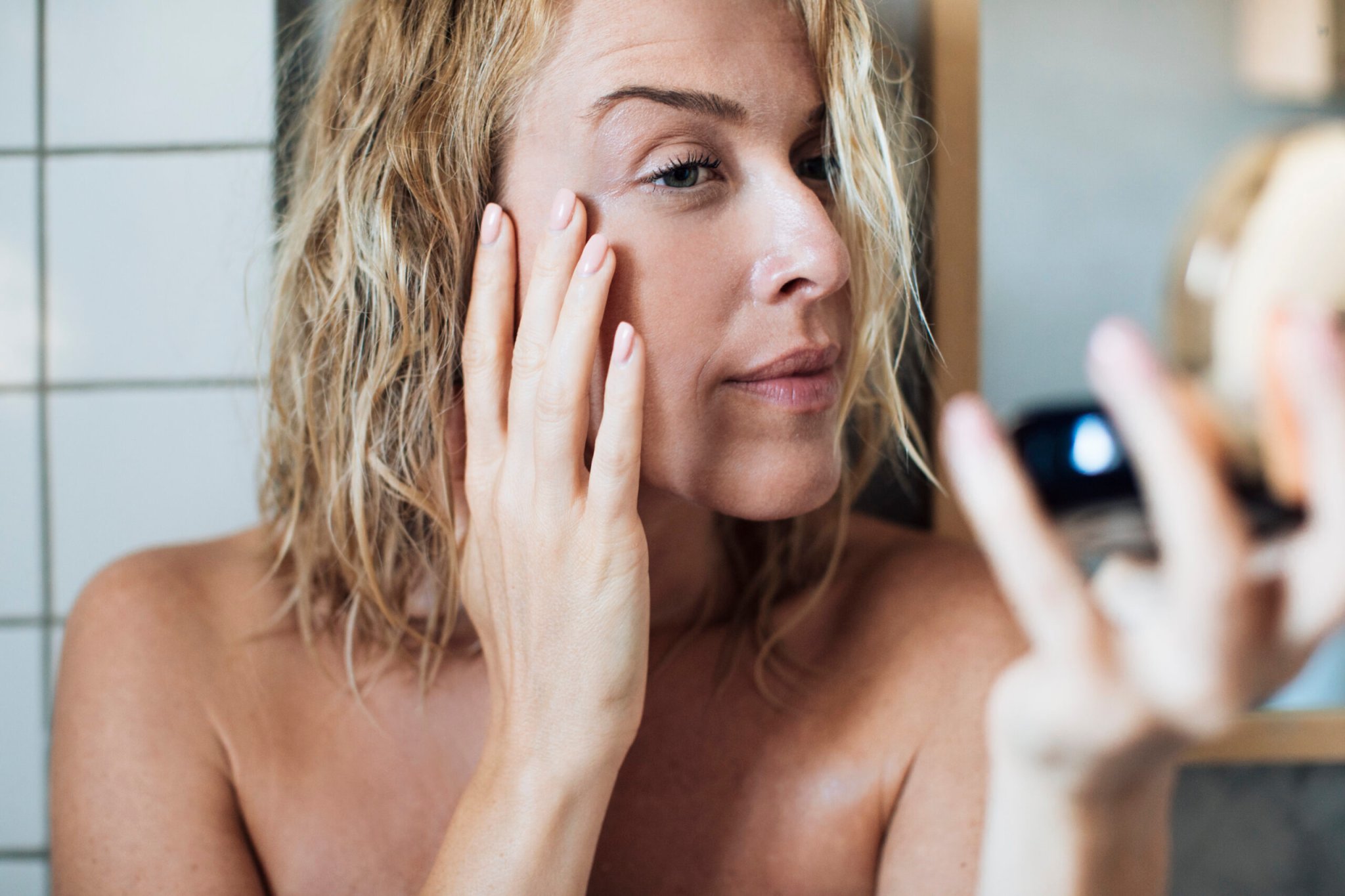

Unless we wake up with a dreaded pimple or spend a long winter dry and itchy, most of us rarely give our skin much thought. So it might surprise you to learn that skin is actually the body’s largest organ, and home to trillions of bacteria. You may not see these microbes, but it’s becoming clear that they play a pretty big role in keeping you healthy.
In a paper out this week in the journal Science Advances, researchers identified a specific strain of bacteria that could protect against cancer, and potentially even help treat it once it’s formed. It’s a preliminary study—done on mice, not humans—so you shouldn’t freak out about whether or not these particular bugs sit on your own skin. But this isn’t the first study to suggest that the bacteria living in and on us (known as the microbiome) are influencing our health. And if we can figure out exactly how that works, some scientists say, perhaps we could learn to equip ourselves with an ideal suite of microbes.
“We are learning that many bacteria on our skin perform important functions to maintain health,” says Richard Gallo, a dermatologist at the University of California at San Diego and the primary investigator on the study.
Though our skin contains countless species and strains of bacteria, one that takes up residence in pretty high numbers is known as Staphylococcus epidermidis. In fact, having a high percentage of this type of bacteria means that your skin is healthy. Researchers have found that people with certain skin conditions like eczema often have less of this type of bacterium and more of another, called Staphylococcus aureus. There are even trials going on now to see if reintroducing S. epidermidis to the skin of people with eczema could improve their symptoms.
That all tells us, the researchers write, that evidence increasingly shows the skin microbiome—and in particular certain species like S. epidermidis—have an important role in promoting health.
Their study zeroed in on a specific strain of S. epidermidis that produces a molecule called 6-HAP. According to their results, that molecule actively prevents cancer cells from spreading. And because some people host more robust colonies of S. epidermidis than others, Gallo and his colleagues say, it follows that the microbiome of some individuals may confer protection against skin cancer.
Gallo and his team tested this idea out in two different ways. First, they found S.epidermidis that didn’t make 6-HAP and introduced this strain to a group of mice. They then exposed these subjects, along with ones who had 6-HAP-producing S. epidermidis on their skin, to cancer-causing ultraviolet radiation. The mice that didn’t have 6-HAP-producing skin microbes developed skin tumors, while the ones who had the 6-HAP did not.
The researchers then gave mice with melanoma (a particularly dangerous type of skin cancer) injections of 6-HAP itself, every two days over a two week period. Their tumor size, on average, shrank by 50 percent more than a group of mice that didn’t receive the molecule.
Gallo and his team don’t completely understand how 6-HAP is performing its cancer-fighting feats. But they do know that it prevents the formation of new DNA by competing for space with a compound (adenine) that makes up those double helixes. It works in a similar way to an existing cancer and autoimmune disease drug called 6-mercaptopurine, or 6-MP.
But what makes 6-HAP so interesting—and such a good target for cancer research—is the fact that it only stops the growth of cancer cells, leaving healthy cells alone. Healthy cells, Gallo says, produce an enzyme that actually detoxifies 6-HAP, theoretically rendering it benign to cancer-free tissues throughout the body.
Researchers need to do much more targeted research (and not just in mice) to figure out how 6-HAP can be put to cancer-fighting use. One key aspect is understanding why some people seem to harbor more S. epidermidis, and more of this specific strain in particular, than others do. If scientists can figure that out, then they might be able to promote the growth of S. epidermidis in people who don’t have as much. Of course, this is assuming that the tumor-shrinking properties seen in mice translate to humans—which we won’t know until research gets much further along.
But even though we don’t know for sure that a healthy skin microbiome can help fight cancer, we do know it can protect us from more mundane conditions like rashes and acne. There’s certainly no harm in trying to up your percentage of S. epidermidis. And Gallo has some advice for folks hoping to keep their skin bacteria in tip-top shape while scientists figure out how to hack the system.
“Today we do not know exactly how to optimize their presence,” says Gallo. “But we do know that practices that damage the skin also have a negative effect on the beneficial strains of bacteria.”
Gallo says using harsh soap and showering too often can hit your skin microbiome hard. A good way to tell if you are being too rough on your skin is keeping an eye out for redness and rashes. That’s a telltale sign that your hygiene habits are inhospitable to the microbes crawling all over you—including the ones that do you a world of good.
